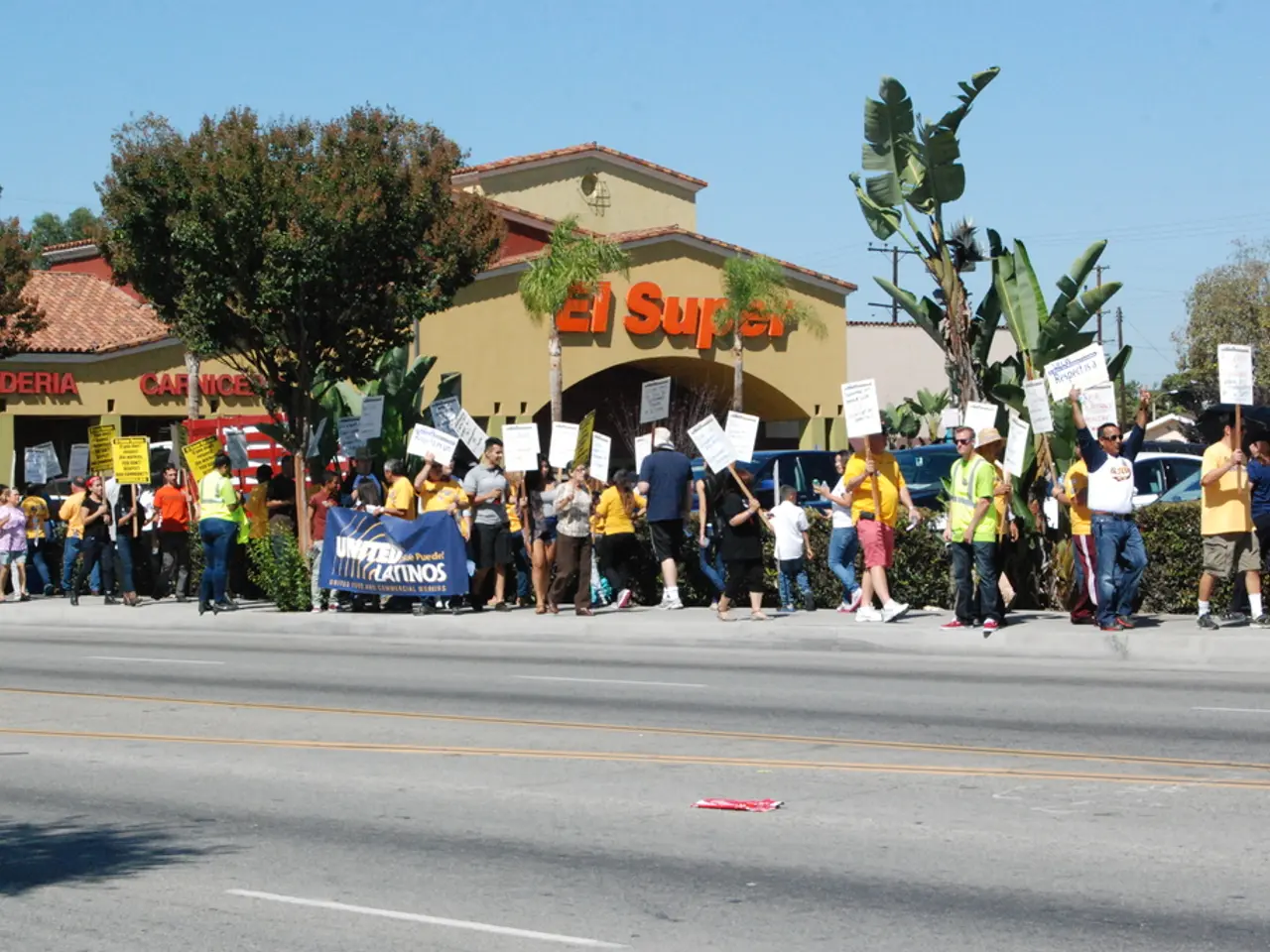Technology's Crucial Impact on the Success of Political Campaigns
================================================================
In the modern era, technology has become an indispensable tool for political campaigns, revolutionising the way they operate and connect with voters. Here's a look at some key strategies and tools that are transforming the political landscape.
Reaching Voters and Targeted Outreach
With the help of SaaS platforms like Vottiv, political campaigns, big and small, can conduct data-driven voter outreach efficiently, even with limited budgets. These tools offer scalability and access to extensive voter data, enabling campaigns to target messages effectively.
Voter Databases
Some tech vendors gain privileged access to large central voter databases, such as the RNC’s database used by Vottiv. This data can help local campaigns improve their targeting accuracy beyond public records.
Tracking Turnout Predictions
Advanced analysis and AI algorithms help model voter turnout based on demographic and behavioural data. Research leveraging AI causal forest methodologies has demonstrated nuanced predictions of turnout effects based on voter profiles and advertising impacts.
Creating Campaign Ads
AI advertising tools like BattlegroundAI’s Programmagic can generate platform-compliant, programmatic ads customised by campaigns with just a few inputs. This enables rapid deployment of multiple ad variations without extensive staff resources.
Get Out The Vote (GOTV) on Election Day
While digital tools are crucial, a balanced approach also includes analog, in-person efforts like rallies and door-to-door engagement to authenticate and reinforce campaigning messages amid digital misinformation concerns. Tech platforms can coordinate volunteer activities and voter contact efforts more efficiently.
Secure Fundraising and Transparent Record-Keeping
Blockchain offers potential for secure fundraising, transparent record-keeping, and even pilot models of tamper-proof digital voting systems.
Engaging with Voters Directly
Using social media platforms like Facebook, Twitter, and Instagram can help political campaigns reach a larger audience. Holding live video chats or Q&A sessions on these platforms can help campaigns engage with voters directly.
Automating Responses and Simulating Human Interaction
Chatbots can automate responses to voter queries, guide users through policy content, collect feedback, and simulate human interaction at scale.
Creating a Solid Online Presence
Creating a website or blog can help political campaigns share information about their platform and the issues. Email marketing can help campaigns reach out to potential supporters and volunteers.
Real-time Issue Tracking and Adjusting Strategies
Real-time issue tracking during campaigns can help political campaigns respond quickly to emerging issues. Sentiment analysis can help candidates measure public opinion in real time and adjust their tone, messaging, or priorities accordingly.
Mobilising Volunteers and Supporters
Mobilising volunteers through text messaging and online chat tools can help campaigns engage with supporters and volunteers. Geo-fencing can help deliver messages or trigger actions to voters within a specific geographic boundary via mobile devices.
Online Advertising and Targeting Specific Demographics
Utilising online advertising can help campaigns target potential voters. Detailed analytics can help campaigns track their progress and optimise their strategies.
Cybersecurity Measures
Cybersecurity is critical in political campaigns to protect campaign infrastructure, voter data, and communication platforms from cyberattacks.
Overcoming Geographic Barriers and Scaling Reach
Virtual events can contribute to digital campaigning by allowing candidates to engage with audiences directly, overcome geographic barriers, and scale reach. Holding online town halls or forums can help campaigns engage with voters directly.
Identifying, Managing, and Tracking Influencers
Influencer technology can help political campaigns identify, manage, and track the impact of political influencers and opinion leaders.
Maintaining Control over Media Relations
Managing media relations through a press room on a website can help campaigns control their message.
Sharing Information and Building a Strong Campaign
Recording campaign videos and uploading them to YouTube can help campaigns share their message with potential voters. Creating content and scheduling tools can help streamline consistent, on-brand messaging.
Addressing Potential Challenges
While technology offers numerous benefits, it's important to remember that overreliance on technology may lead to impersonal outreach, privacy breaches, misinformation spread, and alienation of tech-disconnected voter segments. Sending text messages reminding people when elections are coming up and how they can vote can help political campaigns increase voter turnout.
In conclusion, technology is playing an increasingly significant role in political campaigns, offering tools and strategies for targeted voter outreach, managing and leveraging voter databases, accurately predicting voter turnout, creating compliant and compelling campaign ads using AI, and organising get-out-the-vote (GOTV) efforts on election day. These technologies and strategies allow campaigns to increase efficiency, precision, and scale from voter data management through electoral engagement, adapting quickly to the evolving digital and social environment of modern elections. They especially empower smaller campaigns by bridging access gaps to sophisticated political tech.
- Political campaigns are leveraging SaaS platforms like Vottiv to conduct data-driven voter outreach efficiently, even with limited resources, due to their scalability and access to extensive voter data.
- Tech vendors have access to large central voter databases, such as the RNC’s database used by Vottiv, which can help local campaigns improve their accuracy in voter targeting beyond public records.
- Advanced analysis and AI algorithms help model voter turnout based on demographic and behavioral data, offering nuanced predictions of turnout effects based on voter profiles and advertising impacts.
- AI advertising tools like BattlegroundAI’s Programmagic generate platform-compliant, programmatic ads for campaigns with just a few inputs, enabling rapid deployment of multiple ad variations without extensive staff resources.
- Tech platforms can coordinate volunteer activities and voter contact efforts more efficiently on Election Day, while in-person efforts like rallies and door-to-door engagement strengthen the authenticity and reinforce campaign messages.
- Blockchain offers potential for secure fundraising, transparent record-keeping, and even tamper-proof digital voting systems in political campaigns.
- Social media platforms are vital for political campaigns to reach a larger audience, and holding live video chats or Q&A sessions can help campaigns engage with voters directly.
- Chatbots can automate responses to voter queries, guide users through policy content, collect feedback, and simulate human interaction at scale, which is beneficial for political campaigns.
- Creating a website or blog can help political campaigns share information about their platform and the issues, while email marketing can help campaigns reach out to potential supporters and volunteers in the digital domain.




